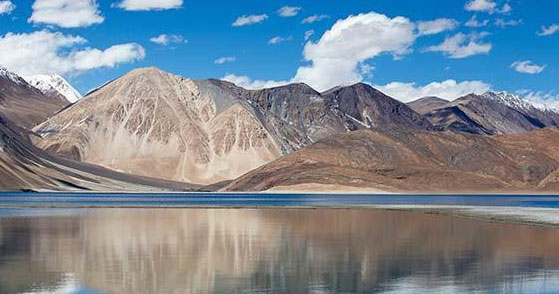TOURISTS ATTRACTIONS
At Darbuk village near Tangste Valley stands a chain of war memorials with regimental insignias in commemoration of the soldiers who lost their lives during the Indo-China war of 1962. Some of the army bunkers and trenches are still in use. Villagers can be seen here along with their large herds of Pashmina sheep and long-tailed yaks.
The placid Pangong Lake is not just a tourist’s paradise but a geologist’s domain too. Travelers can enjoy the solitude for a day or two, zoom their cameras to shoot the black-necked Siberian crane around the Mahe marshes which are the only breeding ground for these migratory birds. At times, they are seen swarming in the cool colorful water of the lake.
The long and narrow lake lies in the neighborhood of the famous Chushul Mountains. The size of the lake is best inferred from the probable etymology of its name, Pangong, which means extensive concavity. The mirror-calm water is cold, clear, and extremely salty, holding sufficient quantity of lime to form a calcareous deposit, which cements the pebbles together in patches of concrete on its bank. It is believed that there is a large amount of minerals in the basin of the lake, which result from the melting of the snow. The water sparkles in distinct shades of blue, green, purple, and violet, being transparent to a good depth. With ease, one can pick pebbles from under the water, and if one is lucky enough, a fossil shell in the clay deposits may be a rewarding find.
HOW TO REACH
Regular flights go to Leh from Delhi. Once in Leh, one can hire a taxi to Pangong Lake. Otherwise, one can make arrangements with some travel agencies, which are ever ready to take one on a trip to the saltwater lake of Pangong Tso.
One can also take the motor route of Delhi-Manali-Jispa-Darcha-Sarchu-Leh-Khardungla-Pangong.

